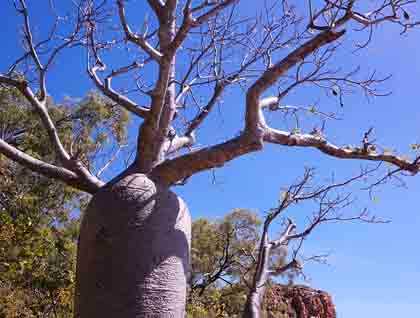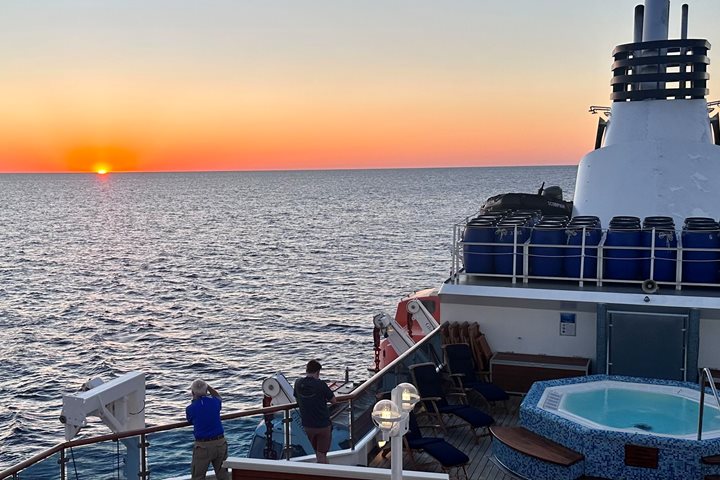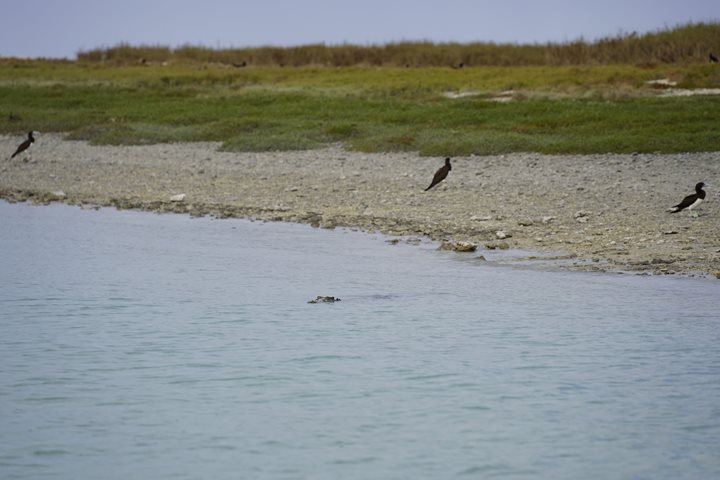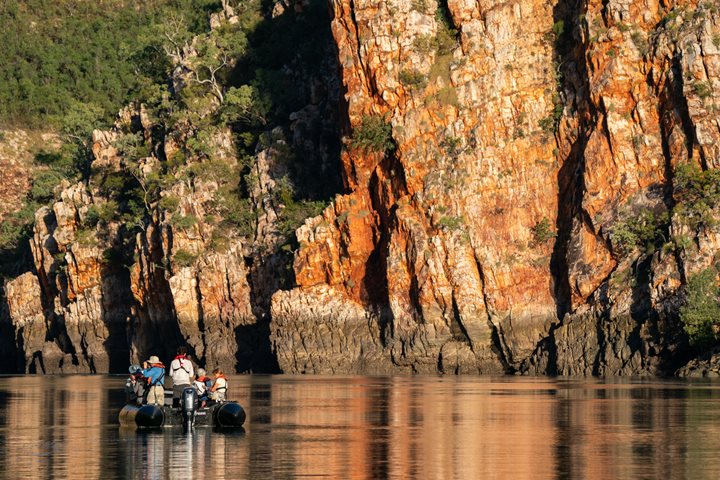Following a stunning day in Yampi Sound, the National Geographic Orion heads almost due east along the Kimberley coast to arrive this morning at Raft Point. This sea country belongs to the Worrorra People who have lived here for thousands of years and whose living culture remains today.
As we transfer ashore we are met by the imposing sandstone figure of Raft Point Bluff while passing by its offshore sentinel, Steep Island. Ashore at the bluff we are met by a Worrorra welcoming party from their outstation at Freshwater Cove. Robin gives us a welcome to this country after which a senior Worrorra man, Wayne Woolagoodja, leads the party up a short but steep climb to the base of the bluff known to them as Umbre, to tell the traditional stories behind some of the most impressive examples of Wandjina art in the Kimberley.
The art exists in an overhanging rock gallery that would have provided shelter to the Worrorra as well as a commanding outlook over their country. The spirit figures and important depictions speak of a time immemorial and appear almost as ancient as the sandstone rock on which it is painted. In part, the significance of this site links people and place and we welcome the invitation to listen to the creation stories and take memorable photos.
While some of us come to terms with the Wandjina art, others opt for a Zodiac tour of Steep Island and the waters surrounding the Umbre bluff. They are rewarded with a mother humpback whale and her calf relaxing on the surface of the shallow waters of the bay.
During lunch National Geographic Orion makes a short trek northwest to Montgomery Reef. A truly amazing spectacle at any time, today we are spoiled as we witness Montgomery Reef in all its glory at the peak of a full-moon spring tide as the water cascades off the top of the reef and the lagoons within. It is not only the size of the reef that is impressive (around 400 square kilometres, 154 square miles) but that it is not in fact a true coral reef but a coralline algal reef built upon a mesa of dolomite capped with Kimberley pentecost sandstone. The incredible aspect is that the top of the platform occurs exactly within the inter-tidal zone of some of the world’s biggest tides. Inside this huge reef, lagoons exist that contain seagrasses and some true corals. These combinations mean the reef ecosystem supports an incredible diversity of life from birds, sharks, sea snakes and marine turtles.
As we take the Zodiacs and venture into a channel that has been created by geology and the action of relentless tides and cascading waters, we come to terms with the feeding opportunities that this massive movement presents to the birds that are regular ebb tide visitors. Countless eastern reef egrets along with beach stone curlews and intermediate egrets ply their trade as we lose track of how many green turtles pop their heads up for a breath. Speeding out of the channel, something catches our eye to cause us to turn around for one last look - a pair of sea snakes locked in a mating embrace provides a truly rare observation to witness.
As the sun fades and the tide heads towards the bottom, we head out of the channel. But today’s expedition is not over yet. On an exposed sandbar the National Geographic Orion hotel team have set up the ultimate “Sand Bar” with drinks and refreshments. As the full moon rises and the sun sets we have to ask, does it get any better than this?







